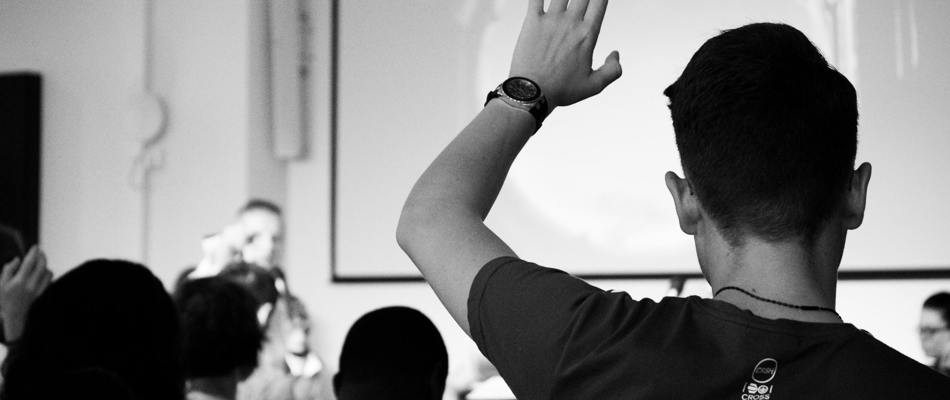Cold calling and bad pizza
Back
This piece was initially published on the Learning and the Brain blog in 2020 here by Andrew Watson. Learning and the Brain is an American conference series and professional development provider looking at educational neuroscience.
When I was in grad school, a well-known professor announced that — given everything we know about the effects of stress — it is professional malpractice to “cold call” on students. (To “cold call” means to call on a student who hasn’t raised her hand.)
Imagine the cascade of bad results.
When cold-called, the student feels stress. Cortisol levels go up. Excess cortisol interferes with learning. In fact, long-term excess cortisol damages the hippocampus. (You can check out this video here.)
My professor’s claim struck me as shocking, because Doug Lemov argues so strongly for cold calling in his much admired Teach Like a Champion:
“If I was working with a group of teachers and had to help them make the greatest possible improvements in the rigor, ratio, and level of expectations in their classroom with one technique, the technique I’d choose might well be cold call"
.”
That is: if we want students themselves to be doing cognitive work — a.k.a. “active learning” — Lemov thinks cold calling is the way to go. It serves four key functions:
First, it lets the teacher check students’ understanding,
Second, it creates a culture of “engaged accountability,”
Third, it helps the teacher speed up or slow down the pace, and
Fourth, it supplements other teaching strategies, like “turn and talk.”
Little wonder Lemov champions it so heartily.
Breaking the Tie?
We’ve got an expert in the neurobiology of stress saying cold calling is professional malpractice. We’ve got an expert in classroom teaching saying that cold calling is profession best practice.
How to we decide?
On this blog, we try always to find relevant research. In this case, the best study I can find was undertaken by Dallimore, Hertenstein, and Platt.
Team Dallimore — aware of both sides of this debate — looked at 16 sections of a college [university] accounting course, including well over 600 students.
They kept track of the professors’ discussion techniques: in particular, did they cold call or not?
And, they followed a number of variables: in particular, how much did students voluntarily participate? And, how comfortable were the students in class discussion? (In other words: what happened to those cortisol levels my professor worried about?)
If the answers to those questions show a clear pattern, that might help us decide to follow my prof’s guidance, or Lemov’s.
The Envelope Please
In brief: cold calling produced good thinking results, and lowered (apparent) stress levels.
That is: in classes with infrequent cold calling, students’ voluntary participation remained the same throughout the term. In classes with high cold calling, their voluntary participation rose from 68% to 86%.
Dallimore’s team saw the same results with the number of questions students volunteered to answer. That number remained flat in the low cold calling classes, and rose in the high cold calling classes.
And, how about stress?
When asked to report their comfort level with class discussion, that level remained constant in low cold calling sections. Comfort levels rose in high cold calling sections.
So: when teachers cold called, their students voluntarily participated more, and they felt more comfortable in class.
Always with the Limitations
Dallimore’s study — combined with Lemov’s insight, guidance, and wisdom — suggests that cold calling really can benefit students.
However, any good teaching technique can be used badly. If it’s possible to make a bad pizza, it’s possible to make a bad version of any great thing.
So, if we’ve got students who have experienced ongoing trauma, we should make reasonable accommodations. If a student has an IEP [~ American equivalent to an EHCP] that warns against cold calling, we should — of course! — heed that warning.
Also, I should acknowledge the limitations of this research. The study I’ve described was published in 2012, and it’s the most recent one I have located. Simply put: we don’t have much research on the topic.
And: research done with accounting students — most of whom are college sophomores — might not apply to your students.
Of course, Lemov works mostly with K-12 [school] students, especially those who attend schools that have relatively high poverty rates. In other words: Dallimore’s research + Lemov’s research shows a wide range of effectiveness for this technique.
In sum: I’m sure teachers can use cold calling techniques badly — resulting in raised stress and reduced learning. But, done well, this technique offers real benefits.
If we create a respectful, supportive, and challenging classroom climate — including cold call — students can learn splendidly. This video shows the technique in action.
Andrew Watson is a former English teacher and now provides evidence-informed PD on educational neuroscience via Translate the Brain, as well as writing on the topic.

